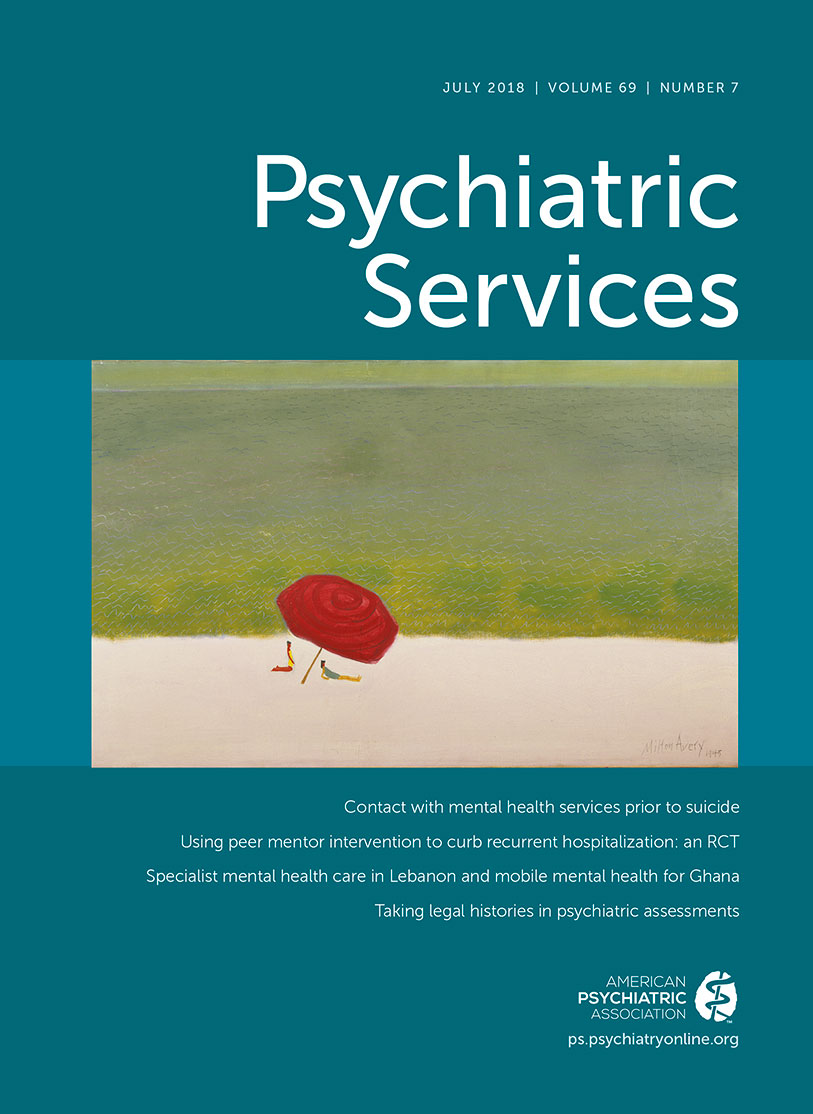Concerns About the headspace Model of Youth Mental Health Services
TO THE EDITOR: I have previously published concerns about the headspace model of care, for both its failure to engage young people in minimally adequate treatment and the weak effects found on the clients’ mental health and functioning (1,2). The study by Cross et al. (3) raises additional concerns.
According to Cross et al., headspace has been “specifically designed to intervene early in the development of psychiatric symptoms.” However, the data reported indicate that headspace is not achieving this aim. The mean age of the patients was 18.1 years, and the mean age of first onset of disabling symptoms was 13.0 years, implying a mean duration of 5.1 years. This cannot reasonably be regarded as early intervention, particularly when the young people in the study often had moderate to severe impairment in social, educational, and employment functioning.
Another concern is that the headspace model as described by Cross et al. has moved away from the usual aim of mental health services—to achieve remission and recovery—to the more limited aim of preventing deterioration. The finding that most patients showed no reliable change, and only a quarter to a third showed reliable improvement, is presented in a positive light. Implicit in this aim is a pessimistic view that the natural history of mental disorders among young people is often progressive. However, the transition rate to deterioration cited by Cross et al. is too low to justify reorienting youth services in this way.
Cross et al. did not cite the independent evaluation of headspace services commissioned by the Australian Government (4). This is an important omission. When the outcomes were compared with a matched control group with similar problems who were not receiving treatment, the standardized mean difference was .16, which is less than a small effect size and was described by the authors of the evaluation as “relatively weak.” This weak effect is important to note given the limitation stated by Cross et al. that “we cannot be certain of how much the observed outcomes vary from naturalistic patterns of disease or illness progression that might have been observed in an untreated population.”
Finally, the patients included in this study appear to have received a larger number of sessions with a clinician than had been reported in headspace national data (5). The authors report the data in a way that seems to imply that all patients who provided consent were included, with no dropout. However, the lack of dropout suggests that the study was based on a completers-only analysis involving a subsample who engaged sufficiently to receive six months of treatment, rather than an intention-to-treat analysis. The authors need to clarify which is the case, and if it was a completers-only analysis, they should report the outcomes from the full cohort that received the service.
1 : How effective are ‘headspace’ youth mental health services? Australian and New Zealand Journal of Psychiatry 49:861–862, 2015Crossref, Medline, Google Scholar
2 : Headspace: The gap between the evidence and the arguments. Australian and New Zealand Journal of Psychiatry 50:195–196, 2016Crossref, Medline, Google Scholar
3 : Variability in clinical outcomes for youths treated for subthreshold severe mental disorders at an early intervention service. Psychiatric Services 69:555–561, 2018Link, Google Scholar
4 Hifferty F, Cassells R, Muir K, et al: Is Headspace Making a Difference to Young People’s Lives? Final Report of the Independent Evaluation of the Headspace Program (SPRC Report 08/2015). Sydney, University of New South Wales, Social Policy Research Centre, 2015Google Scholar
5 : The services provided to young people through the headspace centres across Australia. Medical Journal of Australia 202:533–536, 2015Crossref, Medline, Google Scholar



